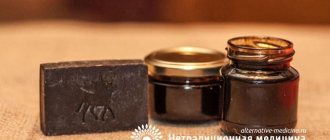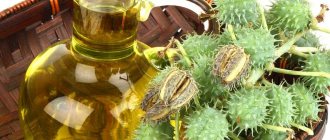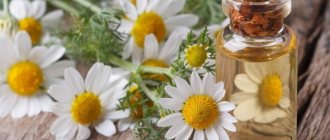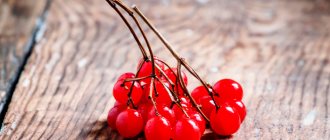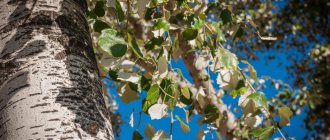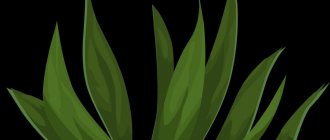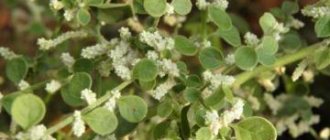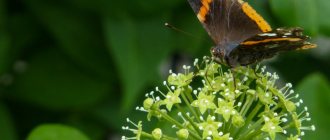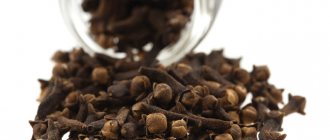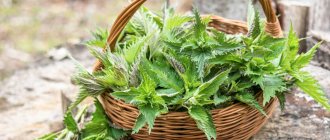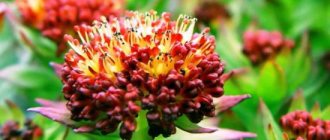There are contraindications, consultation with a specialist is required
Probably, many, walking through the expanses of the fields of our vast Motherland, noticed on their way an attention-grabbing plant that looked like a small Christmas tree. And few people thought, or perhaps did not even realize, that the healing properties of horsetail are very important for human health and are applicable both for treatment and for prevention against various kinds of diseases.
Indeed, in truth, horsetail is a plant unique in its benefits, possessing a huge amount of macro- and microelements beneficial to the human body, especially rich in silicon, necessary for full life, in particular for the correct functioning of the metabolic process. But horsetail is not only useful for this; its healing properties are very diverse.
Description
As soon as the spring sun shines, horsetail begins to sprout in the gardens, which is classified by our summer residents as a weed.
Horsetail likes to grow in acidic soil, this is a signal to start alkalizing the soil
The plant, which belongs to the higher spore species, has a height of 10 to 40 cm, its stems end in a spore-bearing pistil in the form of a spikelet, in which seeds - spores - are located. As soon as they are scattered, the stem dies and leaf development begins. They have a tetrahedral shape, a bright green tint, and branch well on the lower parts of the plant. Horsetail branches are directed upward, towards the sun.
The root system of the plant culture goes deep into the ground, almost a meter, this makes it easy to find food and water. Nodules in the form of balls are located on the roots, and substances that provide nutrition to the above-ground part accumulate in them.
This amazingly hardy crop can tolerate both low and high temperatures, light frosts and unbearable heat; it adapts to drought and thrives in rainy summers.
Horsetail likes to grow in sandy, acidic soil. If it once settled in your garden, we can assume that you have problems: firstly, it’s time to alkalize the soil and add ash or slaked lime, and secondly, a harmful weed has settled on your site, which will be quite problematic to get rid of.
There are several types of horsetail, but only one of them can be eaten and used as a medicine. Only a plant with branches pointing upward is healing. It is better not to touch the rest, otherwise the treatment may turn into an exacerbation of the disease. There have been cases when horses in villages died after eating the “wrong” horsetail contained in hay.
People call the plant by different names: field pine, nursery grass, honeydew, water pine, horsetail, morel, Sokhatin grass.
It is difficult to imagine that once upon a time, at the dawn of centuries, these plants looked like giant trees, which occupied a vast territory on Earth with powerful horsetail forests. It is thanks to them and giant ferns that today we have such a mineral as coal. Today we see only short and rather puny green bristles, which complement the fragrant meadow herbs.
The most dangerous is the marsh horsetail, which grows in swamps. It can be distinguished by its thick stem and few branches. Horsetail must not be confused with meadow horsetail; this can have a very negative impact on health.
Meadow and swamp horsetail contain poison, which causes the death of domestic and wild animals
Outside of an exacerbation of an attack, a person is recommended to:
- limit the intake of proteins and refractory fats into the body;
- reduce salt consumption to 5-7 g, including that contained in foods;
- increase the volume of seasonal vegetables, fruits and dairy products;
- exclude from the diet foods that contain purines that are hazardous to health in large quantities: meat extracts, beef innards, small shrimp, sardines and mackerel, legumes;
- reduce the intake of meat, fish, legumes - peas, beans, lentils;
- practice fasting days;
- If you are overweight, give up sugar and baked goods.
For gout, the meat of young animals, which contains a lot of purines, is especially contraindicated.
Chemical composition
Horsetail contains many substances that are used in the pharmaceutical industry. Among them are:
- alkaloids;
- saponin equisetonin;
- flavonoids;
- aconitic, oxalic and malic acids;
- fatty and essential oil;
- silicic acid salts;
- tannins, resins;
- vitamins;
- carotene and others.
Medicinal raw materials
Collection item. Green, fruitless stems collected throughout the summer.
Collection and processing of raw materials. Green, barren, branchy summer shoots are used for medicinal purposes. The grass is harvested in the summer (June - August), plucking or cutting it with sickles or knives, and when it is thick, it is mowed with scythes without the coarser ground parts. Before drying, impurities of other plants are selected, including non-medicinal horsetail species, which are difficult to distinguish after drying.
Drying. Dry the grass in attics under an iron roof or sheds with good ventilation, spreading a layer of 5-7 cm on paper or fabric.
Quality of finished raw materials. The raw material consists of dried grey-green, grooved, jointed stems up to 30 cm long, with twigs. Humidity - no higher than 13%'. The finished raw material must contain: crushed parts of horsetail - no more than 10%; foreign impurities: organic (including other types of horsetails) - no more than 5%, mineral - no more than 0.5%. The smell is weak and peculiar. The taste is sour. Output of dry raw materials. Approximately 20-25%. Shelf life. 4 years.
Useful properties of horsetail
Horsetail has been known for its healing properties since the time of Avicenna, the famous physician of antiquity, who mentioned it in his medical works as a remedy that effectively stops blood and cleanses the body of toxins and harmful substances.
In the 40s of the last century, the study of horsetail began in medical institutions around the world, after which the medical community proved the unconditional benefits of horsetail for human health.
In scientific works, horsetail looked like a panacea for many diseases of various types.
In fact, it is a strong antioxidant, antiexudative, diuretic and antifungal agent, and has an antispasmodic effect. The importance of the plant in the pharmaceutical industry can hardly be overestimated, since today many drugs are being created that are based on substances from its composition.
Common horsetail has become a real breakthrough in pharmacology and traditional medicine
Interesting facts about the oldest plant
The name of horsetail in Latin sounds and is written as equisetum. This word is formed by merging two others, the first of which means “horse”, and the second means “coarse hair”. This term was first used by Pliny the Elder in his literary research work entitled Historia naturals.
- According to unconfirmed reports (and others have not yet been obtained), the predecessors of horsetail were calamites. They, along with ferns and other ancient plants, subsequently turned into what miners mine today under the guise of coal.
- Overwintering horsetail is the oldest European species of the plant type under discussion. Its ancestors were giant horsetails that grew up to 15 m in height. The modern descendants of these “thugs” are much smaller. But their appearance is indistinguishable from their predecessors.
- The Indians used horsetail to make baskets.
- Field and forest varieties of this plant were used as a dye until the beginning of the 20th century.
- Horsetail has a huge number of popular nicknames. Here are just a few: water pine, Sokhatin grass, groundnut, horsetail and morels.
Healing effect
Doctors use preparations containing horsetail to treat urolithiasis and kidney disease.
The power of its effect surpasses even kidney tea. But it should be remembered that medications based on it cannot be used for nephritis, since some substances are irritants to the kidneys. When diagnosing diseases such as heart and pulmonary failure, edema, horsetail helps to effectively expel excess fluid from the body and thereby alleviate the patient’s condition.
Other properties:
- it has astringent property;
- stops inflammatory processes;
- removes lead and other heavy metals from the body;
- it significantly reduces blood sugar levels;
- in small doses it has a positive effect on the reproduction of collagen and bone tissue;
It is not recommended to use horsetail in large doses.
What is recommended for osteoporosis?
With osteoporosis, bone density decreases and the risk of bone fracture increases. The cause of the disease is insufficient intake of calcium and vitamin D into the body, consumption of alcohol in large quantities, medications of the glucocorticoid group, as well as the postmenopausal period.
Diet therapy for osteoporosis involves the following rules:
- taking calcium, which reduces the progression of the disease (the main source is milk and dairy products);
- consumption of foods with a high content of the microelement magnesium, which also promotes better absorption of calcium by the body (foods such as sesame, almonds, hazelnuts, watermelon, sunflower seeds, oatmeal contain it);
- taking vitamin D (fatty fish, caviar, liver of various origins, milk fats, eggs);
- Postmenopausal women are recommended soy-based products that have an estrogen-like effect;
- It is important to reduce your salt and coffee intake.
In osteoporosis, calcium comes first
Recipes for various diseases
Adenoids
For this disease, a medicinal collection of horsetail should be used. The recipe is as follows: pour 2 tablespoons of the mixture into a glass of water and boil for several minutes. Cool the product and rinse the nasopharynx with it. Repeat the procedure twice a day for a week.
Atherosclerosis
A healing mix consisting of several medicinal plants will help here. You need to take one part each of horsetail herb, birch leaf, dandelion root, wheatgrass root, soapwort root, yarrow herb, chokeberry fruit, and corn silk. Mix the ingredients and pour a glass of boiling water, leave for half an hour, strain and drink 100 ml three times a day after meals.
Vascular atherosclerosis
Arthritis
Pour a large spoonful of horsetail herb into a glass of hot water, wait half an hour and drink the infusion one glass a day.
Bronchiectasis
To treat pulmonary diseases, you will need a medicinal mixture, to which equal amounts of oregano herb, St. John's wort, and cinquefoil rhizome are added. To all of the above you should add knotweed and horsetail grass, but three times more than the rest of the grass. Pour two large spoons of herbal mixture into 400 ml of hot water and leave in a thermos for at least 20 minutes. Take the medicine half a glass a day.
Bronchiectasis
Glomerulonephritis
To collect you need to prepare:
- 4 parts each of St. John's wort and bearberry leaf;
- 3 parts each of horsetail herb, birch buds;
- 2 parts each of knotweed, corn silk, oregano, chamomile flowers.
Take four large spoons of the mixture and pour a liter of not hot water, let it brew for 12 hours, then boil for 5 minutes. Strain and take 200 ml on an empty stomach, gradually drink the rest throughout the day.
Haemorrhoids
For hemorrhoids, you can drink, make a poultice, and add a medicinal herbal mixture to the bath while bathing, consisting of three parts of oak bark, two parts of horsetail, one part of steelhead root, chamomile flowers and tansy. Pour half a liter of boiling water over 60 g of the mixture and leave for at least 4 hours. Drink 50 ml three times a day half an hour before meals.
For bleeding, take 1 part of buckthorn bark, flax seed, chamomile, dried grass, horsetail, and knotweed. A tablespoon of the mixture is mixed with a glass of boiling water and kept covered for 20 minutes.
Drink 1/3 three times throughout the day.
Purulent wounds
Tea for lotions is made as follows: brew a handful of horsetail herb with 200 ml of boiling water, boil over low heat for 5 minutes and do the procedures in the form of lotions.
Cholelithiasis
The collection consists of two spoons of dry horsetail root, which must be poured with two glasses of hot water. Drink the mixture in small sips four times.
Urolithiasis disease
One of the most popular preparations during urolithiasis helps relieve pain and helps remove stones from the body. It is done like this:
1 part horsetail, lingonberry leaf, strawberry leaf, caraway fruit, juniper fruit, licorice root. The collection is infused in hot water for half an hour, then filtered through cheesecloth and taken half a glass four times a day.
Nephritis
An infusion of two spoons of horsetail and a glass of boiling water is prepared in a water bath for about 30 minutes, infused for about 15 minutes, then filtered and drunk once every two days, 100 ml.
Pyelonephritis
Herbs such as horsetail, St. John's wort, violet grass, and motherwort are added to the collection in equal parts. Pour all ingredients into 200 ml of water and cook until tender for 25 minutes, drink in small portions throughout the day.
Psoriasis
Here you will need: celandine - 1 tsp, horsetail - 2 tsp, St. John's wort - 3 tsp, string - 3 tsp, black elderberry - 2 tsp, corn silk - 2 tsp, lingonberry - 2 tsp, calamus root - 3 tsp, elecampane root – 2 tsp.
Take the mixture in the amount of one tablespoon and pour hot water into a thermos in the evening. You can take the medicinal drink in the morning. Dose for psoriasis: 100 ml in the morning and before bed.
Seborrheic dermatitis
Washing the skin with dermatitis is carried out using a special medicinal infusion. It is prepared from a handful of dry grass and two glasses of boiling water. After the herb has infused, the liquid is filtered and procedures are performed.
Prostration
Horsetail tea is drunk several times throughout the day before meals; this remedy cleanses the body well.
Puffiness of the eyelids and eye fatigue
To relieve puffiness in the eyes and face, you can use the tea described above.
Acne
Horsetail and linden flowers must be taken in equal parts and mixed with boiling water. For procedures, use tampons soaked in liquid.
Cystitis
Several preparations are suitable for the treatment of cystitis.
- 1 recipe - during an exacerbation, tea made from dry herbs infused in boiling water will help.
- Recipe 2 – recommended for use in chronic forms of the disease. Here you can use both infusion and compresses. After the herb has been brewed and infused, it is placed in a bag made of canvas or linen and applied to the lower abdomen until the compress has cooled. At the same time, you need to drink a glass of infusion. After such treatment, the pain subsides and the disease gradually goes away.
- Recipe 3 - used for high levels of alkali in the urine and inflammatory processes in the bladder. You need to prepare a mixture of various herbs, taking them in equal parts. We take the leaves of horsetail, birch, bearberry, plantain, the roots of marshmallow, femur, licorice, and juniper fruits. After mixing all the ingredients, take a spoonful of the mixture and fill it with hot water. After prolonged infusion, strain and drink several times a day. Dose at a time – 1/3 cup.
Eczema
For eczema, we prepare an infusion of horsetail, string, rose hips, calendula, oak bark, and blackberry leaves.
It is better to prepare the medicine in a water bath for 10 minutes, then leave it until it cools completely and begin treatment with lotions or wrapping the inflamed areas of the skin.
Herbal medicine against cancer
A completely reasonable question arises: if horsetail is a powerful natural remedy that heals many vital systems of the body, then can it play a significant role in curing cancerous tumors?
There are several ways to use natural raw materials for one of the most serious lesions of the human body - the formation of a malignant tumor in the stomach. In this case, it is recommended to make a compress and apply it for a long period of two hours on the affected area in the morning and evening every day until progress is achieved, confirmed by a medical examination.
The compress is prepared as follows:
- Take a clean and wide gauze cloth twenty by twenty centimeters. Dried and crushed horsetail stems are laid out there in an even layer.
- The top of the raw material is covered with gauze. Make three more top layers in the same way.
- Next, you need to generously moisten the gauze from a spray bottle and, placing a compress on the stomach, tie the patient with a warm scarf to keep him warm. The procedure must be performed lying on your back.
There is information that a group of Russian scientists, as part of an experiment, studied the effect of extracts extracted from horsetail on cancer cells located in the kidney area. The results were more than impressive. Due to its rapid ability to remove toxins and other poisons, this plant material, as part of complex therapy, greatly helped patients fight malignant kidney tumors.
For throat cancer, gargling with horsetail infusion should naturally be included in the treatment program. The infusion should be warm, not hot, you can also add a teaspoon of honey to soften the walls of the larynx.
People who practice herbal medicine also recommend horsetail as a means to suppress the growth of cancerous tumors in the area of the female uterus. To do this, you need to include horsetail tea in your daily diet.
Using horsetail at home
With the help of healing remedies and preparations made with your own hands at home, you can stop the development of many diseases, which include: rheumatism, chronic forms of tuberculosis, hypertension, ailments associated with the visual, hearing, and urinary organs.
Substances and extracts from horsetail are included in the well-known Traskova mixture for the treatment of asthma.
Infusions of horsetail can be used to treat stomatitis, tonsillitis, and make healing baths for eczema, ulcers and wounds, fistulas and seborrhea
Contraindications, harm to plant health
It is strictly unacceptable to give medications with this plant to children under 3 years of age. It is not recommended to take remedies (pharmacy or homemade) with horsetail if:
- heart or kidney failure;
- individual intolerance to plant components;
- jade;
- pregnancy;
- lactation;
- the presence of chronic inflammatory diseases of various etiologies, especially in the acute phase;
- nephrosis;
- intense internal bleeding.
Harm from treatment with horsetail can only occur if the approach to treatment is incorrect. In other cases, if the dosage is strictly observed, there should be no ailments.
Sometimes mild side effects are possible such as:
- red rashes on the skin;
- itching;
- redness and swelling of the epidermis;
- hives;
- erythema;
- angioedema (rare);
- anaphylactic reactions (rare).
These are only those manifestations of adverse reactions that are possible from the immune system. But other organs, in particular the gastrointestinal tract, can also respond negatively to horsetail treatment. In this case, the negative consequences of therapy will manifest themselves:
- nausea;
- stomach pain;
- diarrhea;
- vomiting;
- constipation;
- colic, flatulence;
- bloating.
On the part of the nervous system, horsetail therapy can cause:
- daytime sleepiness;
- depression or, conversely, increased mental excitability;
- temporary impairment of cognitive functions;
- night insomnia;
- dizziness;
- headache;
- prostration;
- tremor of the limbs.
But the most dangerous is poisoning from a plant that is classified as poisonous. But, fortunately, this herb is not potentially life-threatening, although an overdose of drugs based on it can cause symptoms, with which the patient may have to be taken to the hospital.
See also:
Ledum marsh - medicinal properties and contraindications, indications for use
